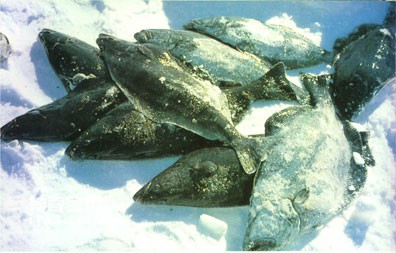Arctic cod is distributed throughout the Arctic and is a typical cold-water fish. When the temperature exceeds 5°C, they disappear. It is a small and medium-sized fish with a maximum body length of up to 36 cm. It is one of the important economic fish in the Arctic region.
In summer, Arctic cod mainly lives on the edge of the frozen area of the Barents Sea in the Kara Sea. Arctic cod larvae feed on small phytoplankton and zooplankton. As it grows, the plankton individuals it feeds on gradually grow from small to large, and it partially preys on small fish.
The growth rate of Arctic cod is very fast in the cold Arctic. At the age of 3, the average body length is 17 cm, at the 4th age it can reach 19.5 cm, at the 5th age it is 21 cm, and at the 6th age it is 22 cm. The maximum age of Arctic cod can reach 7 years.
In winter, the liver of Arctic cod accounts for 10% of the body weight and contains 50% of valuable fat. Therefore, Arctic cod has become an important food target for seals, whales and fish-eating birds; many land animals, such as polar bears, Arctic foxes, etc. Look for Arctic cod blown ashore by snowstorms on the coast in autumn to make up for the lack of food.

animal tags: cod
We created this article in conjunction with AI technology, then made sure it was fact-checked and edited by a Animals Top editor.